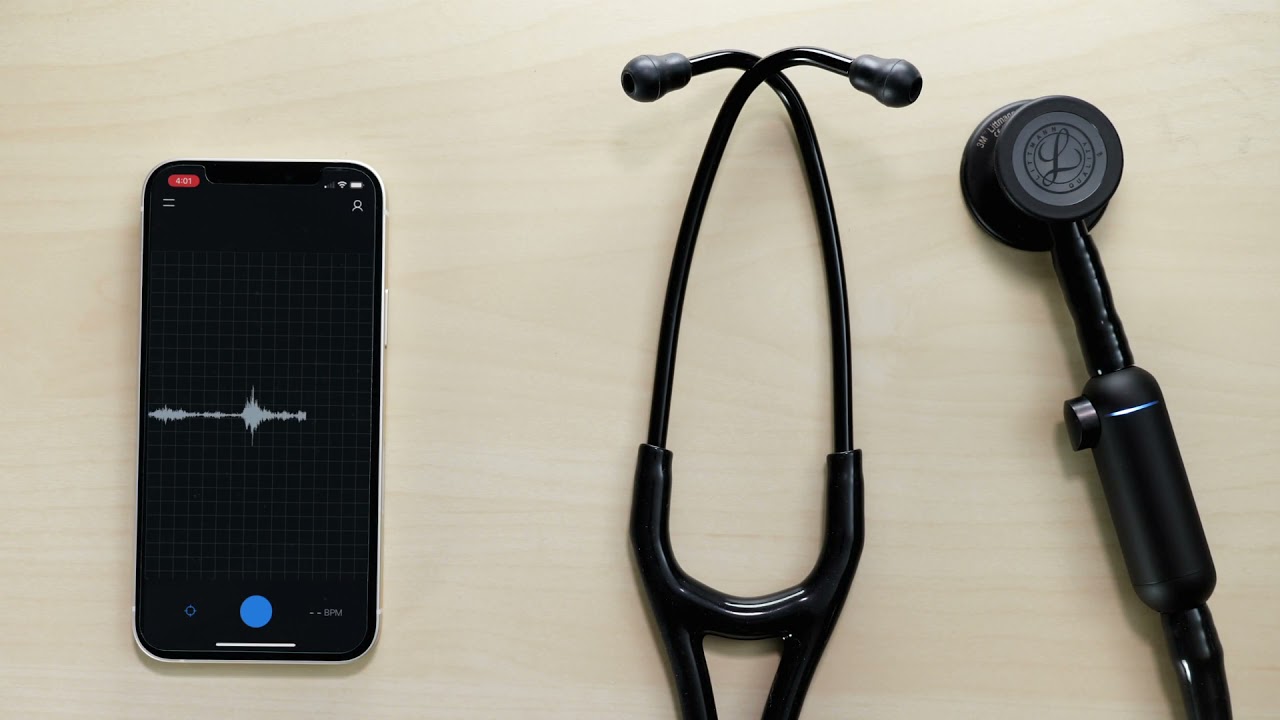What is a Digital Stethoscope?
A digital stethoscope works in a similar way to a traditional acoustic stethoscope but instead of transmitting sound waves through a hollow tube, it converts the sounds into digital signals using a built-in microphone. These digitized sounds are then transmitted either via Bluetooth to a smartphone, tablet or computer for storage, analysis and transmission or are played back through headphones or earbuds. This allows for much clearer amplification and filtering of sounds compared to what the human ear can hear alone through a traditional stethoscope. Digital stethoscopes also have additional features like recording capabilities, augmented clinical diagnosis support and integrated sensors for additional vitals.
Advantages of Digital Stethoscopes
One of the major advantages of Digital Stethoscope is their ability to amplify sounds up to 40-100 times more than what can be heard through a regular acoustic stethoscope. This drastically improves the clarity and details of heart, lung and bowel sounds that may otherwise be difficult to discern clearly. The digital signals can also be processed through various filters to isolate individual sound frequencies for closer examination. Recordings made through digital stethoscopes allow Sounds to be played, replayed, examined and compared over time which aids in longitudinal monitoring of patients. Some digital stethoscopes also integrate other vital sensors for measurements like blood pressure, pulse oximetry etc thus providing more holistic patient examination at the point of care. Many also support wireless transmission of recordings and real-time auscultation through secure platforms, enabling remote diagnosis and consultations.
Application of Digital Stethoscopes in Clinical Practice
Digital stethoscopes are finding increasing adoption across various medical specialties and clinical settings. In cardiology, they are very useful for hearing subtle murmurs and detecting abnormalities in heart sounds that may indicate conditions like arrhythmias, valve issues or structural defects. In pulmonology, lung sounds can be greatly amplified to hear crackles, wheezes or decreased breath sounds more clearly pointing to issues like pneumonia. They are also benefiting pediatric checkups where auscultation of smaller, fussier children can be challenging. Many general physicians and nurses in outpatient clinics and emergency rooms are now using digital stethoscopes for more efficient auscultation of patients. Telemedicine has especially benefited with digital stethoscope enabled remote exam capability. Some hospitals are also pilotin systems where stethoscope sounds are directly streamed and recorded in patient medical records.
AI and Digital Stethoscope Sounds Analysis
With the growth of AI capabilities in healthcare, researchers are exploring the use of machine learning algorithms trained on large clinical sound databases to analyze and characterize stethoscope recordings. Some Digital Stethoscope companies are integrating such AI classifiers directly into their devices which then suggest possible conditions based on the recorded auscultation. For example, detection of extra heart sounds could warrant follow up for murmurs while abnormal breath sounds may flag potential respiratory diseases. Although still in early stages, ongoing research aims to develop highly accurate auscultation AI assistants. Such AI backed digital stethoscope analytics promise more objective clinical diagnoses, especially in resource constrained primary care settings. As the AI models get enhanced clinically, they may reduce reliance on specialist referrals in the future.
Future of Digital Stethoscopes
As digital stethoscope capabilities keep advancing, the future holds potential for many more smart innovations in this clinical assessment domain. Integrating multiple vital sign sensors into digital stethoscopes enables a more comprehensive patient checkup at point of care. Cloud connectivity allows sharing recorded sound files instantly across care teams. It is expected that future models will offer enhanced stethoscope head designs for improved contact and versatility of auscultation sites assessment. Developing standardized clinical sound libraries and ontologies would boost AI research for leveraging sound data to its true diagnostic potential. Ultimately, as digital stethoscope machines learn directly from practitioners over time, they aim to become valuable assistants augmenting clinical acumen instead of just being replacement observation tools. With each new advancement promising better patient outcomes, digital stethoscopes are set to revolutionize physical diagnosis practices globally.
*Note:
1. Source: Coherent Market Insights, Public sources, Desk research
2. We have leveraged AI tools to mine information and compile it.



